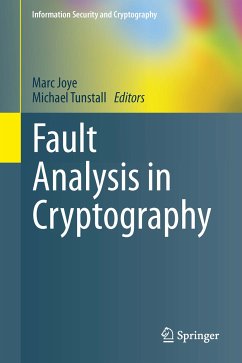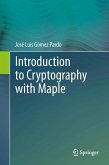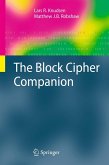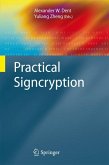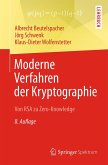Preventing fault attacks without sacrificing performance is nontrivial and this is the subject of this book. Part I deals with side-channel analysis and its relevance to fault attacks. The chapters in Part II cover fault analysis in secret key cryptography, with chapters on block ciphers, fault analysis of DES and AES, countermeasures for symmetric-key ciphers, and countermeasures against attacks on AES. Part III deals with fault analysis in public key cryptography, with chapters dedicated to classical RSA and RSA-CRT implementations, elliptic curve cryptosystems and countermeasures using fault detection, devices resilient to fault injection attacks, lattice-based fault attacks on signatures, and fault attacks on pairing-based cryptography. Part IV examines fault attacks on stream ciphers and how faults interact with countermeasures used to prevent power analysis attacks. Finally, Part V contains chapters that explain how fault attacks are implemented, with chapters on fault injection technologies for microprocessors, and fault injection and key retrieval experiments on a widely used evaluation board.
This is the first book on this topic and will be of interest to researchers and practitioners engaged with cryptographic engineering.
Dieser Download kann aus rechtlichen Gründen nur mit Rechnungsadresse in A, B, BG, CY, CZ, D, DK, EW, E, FIN, F, GR, HR, H, IRL, I, LT, L, LR, M, NL, PL, P, R, S, SLO, SK ausgeliefert werden.
Hinweis: Dieser Artikel kann nur an eine deutsche Lieferadresse ausgeliefert werden.
"Among the well-studied side-channel analysis techniques, fault analysis might be the most powerful for recovering the secret value in the computation of a cryptographic algorithm. ... This book contains sufficient information for people who have not studied fault analysis before. It will be a handy book for self-study for both security engineers and academic researchers." (Zheng Gong, Computing Reviews, October 11, 2012)

